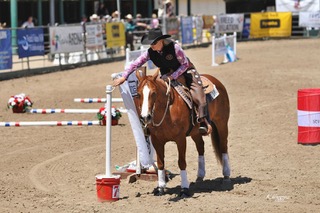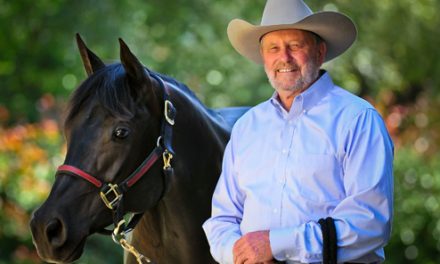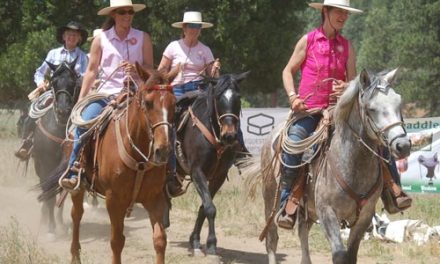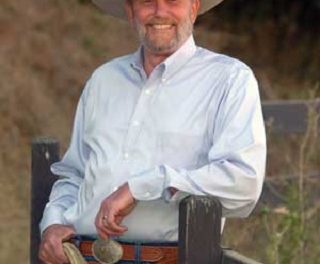
One of the things I have seen in the last few years is the growth in
popularity of Ranch Riding and Versatility and people buying
Reining Horses that are not quite making it in the reining world
and then using them for Ranch Versatility. However, most reining
horses carry their heads down below their withers. When a horse
gets relaxed and soft, the head drops lower and lower. While some
reining trainers like it when the horse keeps its head low, the
Ranch Versatility rulebook is very clear that a natural head
carriage is desired. I am seeing a lot of Reining horses used for
Ranch Versatility and while these horses do well, the low headset
goes against what Ranch Versatility is all about and does not work
well for the horse.
When a horse carries it’s head low to the ground, that naturally
puts more weight on the front end because the horse has lost its
balance. Horses are naturally heavy on the front end because most
of their weight is in the head and neck. When we teach a horse to
drop the head really low that puts even more weight on the front
end. Where does that weight go? It goes to the front pasterns. In
almost every discipline, jumping, eventing, reining for instance,
horses get arthritic in their hocks. They use the hocks more
because the engine is in the rear. In the cutting world, the horses
break down in the pastern area because they are always down on
the front end. If I have to treat arthritis, I would rather treat it in the
hocks rather than the pastern joint in the front. Any performance
horse will eventually have arthritis in the hocks. With my horse
Tennison, I did not have to inject his hocks until he was about 26
and he was quite athletic. Of course, some horses do better than
others.
The Ranch Versatility turn around does not need to be fast. It does
not have to look fancy. We are looking for slow and correct. All
we want to see in the turn around is how the horse handles through
the maneuver. If you have to stop a cow or head off a cow are you
able to maneuver the horse? When working cows, we are always
using shoulder control. Many people who have done cow clinics
with me want to circle around to head off the cow but if you do
that you end up losing the cow. It is important that the horse handle
the front end smartly. The horse must be able to do a 180 turn very
quickly to head off a cow. You must keep your eyes on the cow
because you should never take your eyes off the cow.
The back up should leave a good impression with the judge. The
horse should lift up the shoulders and move backwards smoothly,
driving with the hindquarters and up under itself. The typical
backup on a ranch horse is obviously dragging a cow roping. You
can’t have the horse backing up and resisting and throwing up its
head when you are trying to maneuver a calf to doctor.
Sometimes in riding patterns there are logs incorporated to go
over, gates to go through and even cattle to move. On the course,
we want the horse paying attention, looking where the logs are
placed. If the horse blindly goes over them he is not paying
attention to where he is putting his feet and he will tick or kick the
logs or even trip. A horse that drops his nose to the ground and
pays attention crossing the logs will get more credit. When the
horse is attentive to the logs or other obstacles he must cross, he
will not touch them and will cross smoothly.
Going through a gate should be done with ease. In the ranch
patterns they are judging for fluidity and ease of handling the
horse. Some of the riders I have gone out with who work on
ranches are not so easy in handling their horses. They are familiar
with the cows and have kind of been there and done that. They
want to get the job done and are not very interested in how it looks.
A good ranch horse should be a very finished horse. It should be
forward and have good, balanced carriage. It should move with
fluidity and drive from the rear. It should be easy to handle and be
a real joy to ride and to watch.
Charles Wilhelm




